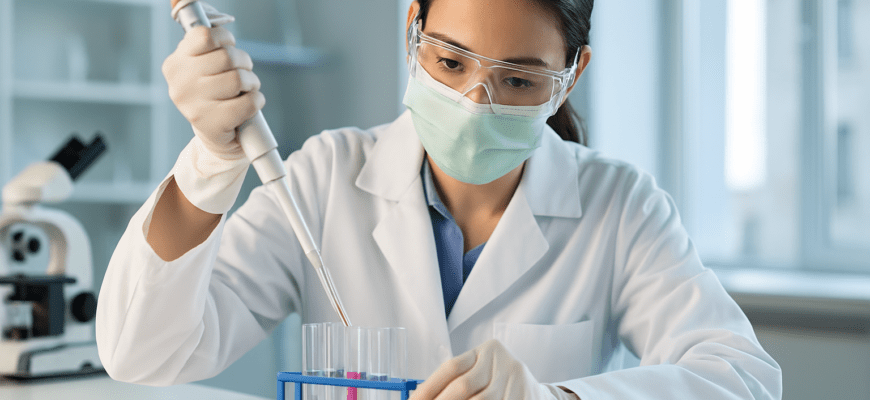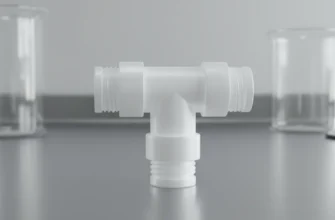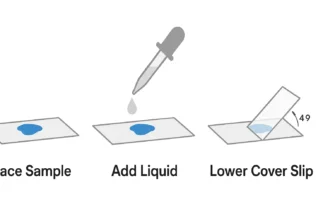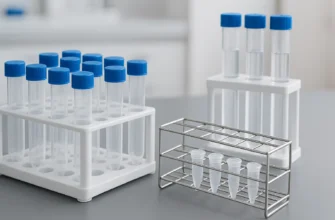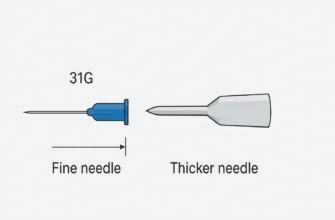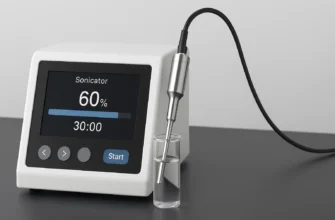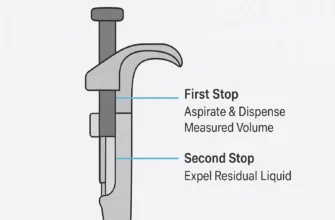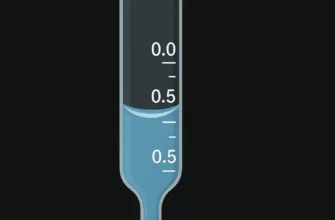The Critical Role of Pipettes in Laboratory Science: Precision and Accuracy in Liquid Handling
Pipettes stand as one of the most essential tools in modern laboratory science, enabling researchers to measure and transfer minute volumes of liquids with remarkable precision. Their importance cannot be overstated – the accuracy of countless experiments in biology, chemistry, medicine, and other scientific disciplines hinges on proper pipetting technique. This article explores the fundamental role of pipettes in laboratory work, detailing their types, working principles, maintenance requirements, and applications across various scientific fields.
What Are Pipettes?
A pipette is a laboratory device designed to measure and dispense small amounts of liquid, typically in volumes of milliliters (mL) or microliters (μL). The name “pipette” derives from the French word “pipette,” meaning “small pipe”. These precision instruments have evolved significantly over time, from simple glass tubes to sophisticated electronic devices capable of measuring volumes as small as 0.1 microliters.
Pipettes come in three basic varieties: glass, plastic, and electronic. Glass pipettes are constructed of durable borosilicate glass, while plastic pipettes are typically made of polyethylene terephthalate (PET). Electronic pipettes represent the most advanced category, featuring microprocessor-controlled operations for enhanced precision. The design of all pipettes serves a single crucial purpose – to ensure experimental accuracy by allowing precise measurement and transfer of liquid volumes, which is essential in many scientific experiments, particularly in chemistry where even slight variations can significantly affect results.
In laboratory settings, pipettes function as extensions of the scientist’s hands, enabling the manipulation of volumes too small for human perception. Without these tools, modern molecular biology, biochemistry, and numerous other scientific disciplines would face severe limitations in experimental design and execution. The development of micropipettes capable of handling volumes in the microliter range has revolutionized laboratory techniques, making possible many of the advances in genetics, proteomics, and pharmaceutical research we see today.
Types of Pipettes
Air Displacement Pipettes
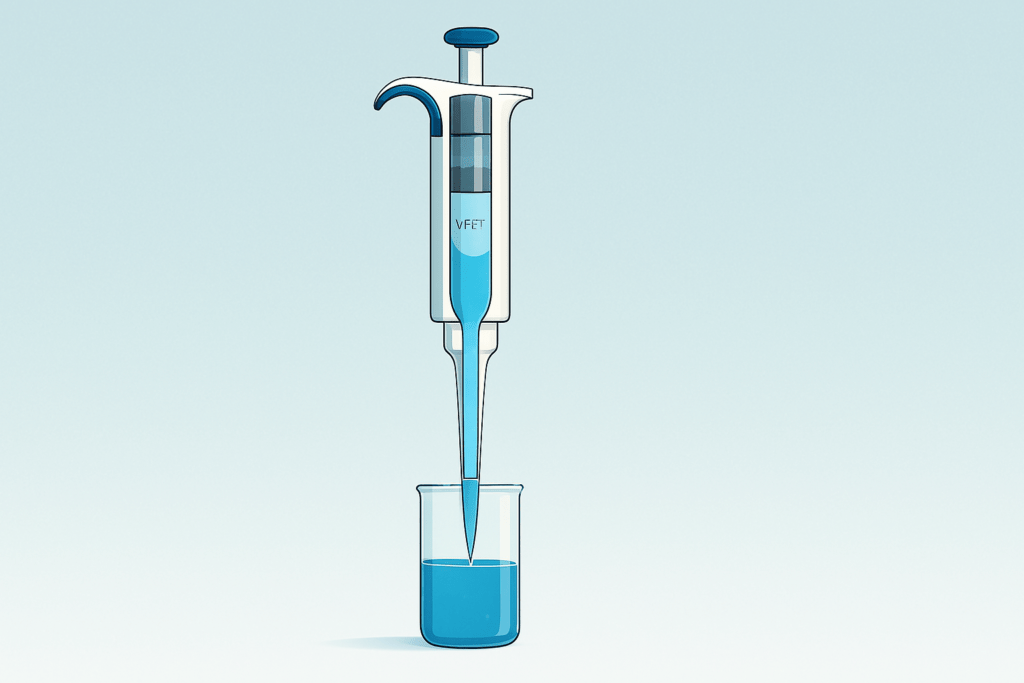
Air displacement pipettes represent the most common variety found in laboratories worldwide. These instruments operate using an air cushion between the piston and the liquid being measured. When the plunger is pressed and released, atmospheric pressure forces liquid into the tip due to the vacuum created by the piston movement. This design makes them versatile tools suitable for most routine laboratory applications involving aqueous solutions. Air displacement pipettes are typically less expensive than other varieties and offer sufficient accuracy for many standard procedures. Their limitations become apparent when working with viscous or volatile liquids, as the air gap can lead to measurement inconsistencies under these conditions. Despite these limitations, their ease of use and maintenance have established them as the workhorses of most research laboratories.
Positive Displacement Pipettes
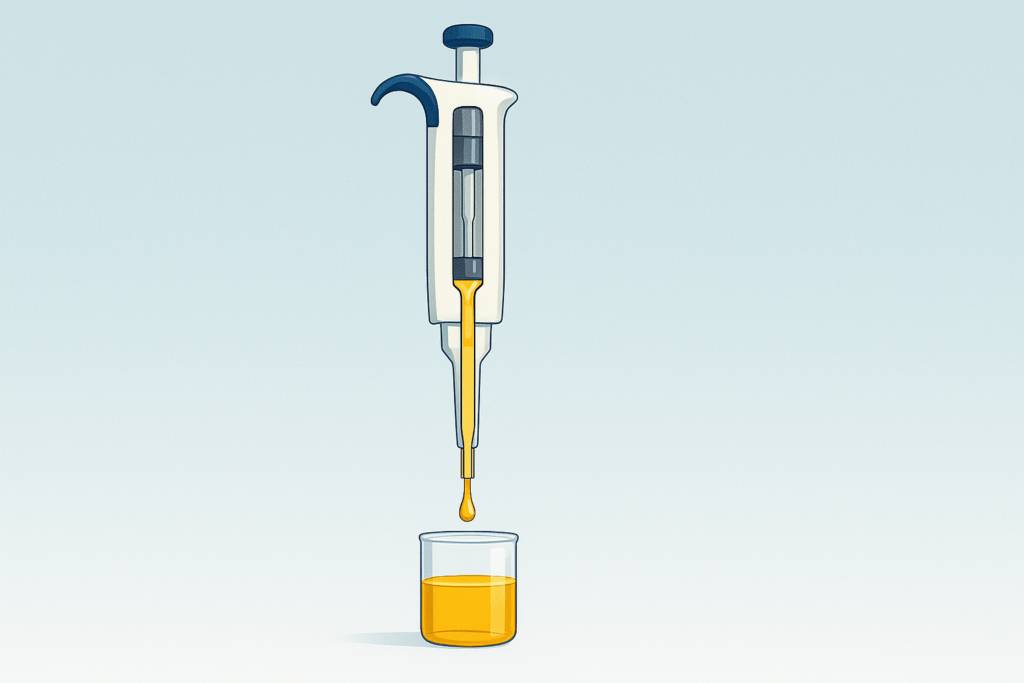
Positive displacement pipettes employ a fundamentally different design approach than their air displacement counterparts. These instruments feature a disposable piston that comes into direct contact with the liquid being pipetted, eliminating the air gap entirely. This direct-contact mechanism ensures that the volume of liquid aspirated is exactly what is dispensed, with minimal deviations. Positive displacement pipettes excel at handling challenging liquids such as viscous substances (glycerol, oils, detergents), volatile compounds, and high-density solutions. By eliminating the air cushion, these pipettes ensure that liquid movement is not affected by factors such as viscosity, vapor pressure, or temperature – variables that often cause inaccuracies in air displacement pipettes. While typically more expensive and requiring specialized tips, positive displacement pipettes provide superior accuracy in applications involving difficult-to-handle liquids.
Volumetric Pipettes
Volumetric pipettes are designed for applications requiring exceptional accuracy in delivering a single, fixed volume. These glass pipettes are calibrated to deliver a specific volume with high precision, making them indispensable tools in analytical chemistry and pharmaceutical laboratories. Typically featuring a bulbous reservoir connected to a narrow, calibrated tube, volumetric pipettes are particularly valued for preparing standard solutions and performing critical analyses where volume precision is paramount. Their design focuses exclusively on accuracy at one specific volume rather than flexibility across a range. Laboratory protocols requiring the highest level of precision, such as analytical titrations and reference standard preparations, frequently specify the use of volumetric pipettes to ensure experimental reliability and reproducibility.
Graduated/Mohr Pipettes
Unlike volumetric pipettes, graduated (or Mohr) pipettes feature a scale along the length of the tube that allows different volumes to be measured as needed. These versatile instruments provide flexibility in measuring various volumes during an experiment without requiring multiple pipettes. Graduated pipettes typically consist of a straight, uniform-bore tube with volume markings etched or printed along its length. While offering greater versatility than volumetric pipettes, they generally provide slightly lower accuracy. Graduated pipettes find extensive use in biological and biochemical laboratories for applications where moderate precision combined with flexibility is more valuable than extremely high accuracy at a single volume point. Their ability to deliver variable volumes makes them particularly useful in experimental optimization and preliminary studies.
Micropipettes
Micropipettes represent the pinnacle of precision liquid handling for extremely small volumes. These specialized instruments are designed to accurately measure and dispense volumes ranging from microliters to nanoliters, making them essential tools in molecular biology, biotechnology, and clinical diagnostics. Modern micropipettes feature adjustable volume settings, comfortable ergonomic designs to reduce hand fatigue, and compatible disposable tips to prevent cross-contamination. Available in both single-channel and multi-channel configurations, micropipettes allow for either individual sample handling or simultaneous dispensing across multiple wells or tubes. Their development has been crucial to the advancement of techniques such as PCR, gel electrophoresis, and next-generation sequencing, where precise handling of minute reagent volumes is essential for experimental success.
How Pipettes Work
Basic Principles of Operation
Pipettes operate primarily through two fundamental mechanisms: air displacement and positive displacement. In air displacement pipettes, a piston moves within a chamber, creating an air cushion between itself and the liquid. When the plunger is depressed, some air is expelled; upon release, atmospheric pressure forces liquid into the tip to replace the air volume. This indirect liquid handling system works well for routine applications but can introduce variability when working with certain challenging liquids. In contrast, positive displacement pipettes eliminate the air interface entirely, with the piston directly contacting the liquid. This direct contact ensures more consistent volume measurements regardless of liquid properties like viscosity or vapor pressure. Understanding these basic operational principles helps laboratory personnel select the appropriate pipette type for specific applications, enhancing experimental reliability and reproducibility.
Mechanics of Aspiration and Dispensing
The precise mechanics of pipetting involve a carefully engineered system of springs, pistons, and seals working in concert to ensure accurate liquid measurement. Most manual pipettes feature a two-stage plunger mechanism with distinct stopping points that serve different functions during the pipetting process. The first stop controls the volume of liquid aspirated or dispensed during normal operation, while the second stop (reached by pushing the plunger further down) creates additional force to expel any remaining liquid, ensuring complete dispensing. This blowout function is particularly important when working with viscous solutions or when maximum recovery is required. Electronic pipettes automate these mechanical processes, providing consistent plunger movement speeds and forces that can reduce user-to-user variability. The mechanical precision of modern pipettes allows for reproducible liquid handling down to sub-microliter volumes, enabling increasingly sophisticated experimental designs across scientific disciplines.
Forward vs. Reverse Pipetting Techniques
Laboratory scientists employ two primary pipetting techniques depending on their specific application needs: forward and reverse pipetting. Forward pipetting – the standard approach for most applications – involves pressing the plunger to the first stop, aspirating the liquid, then dispensing by pushing past the first stop to the second stop to expel all liquid from the tip. This technique ensures accurate aspiration of the set volume and complete emptying of the tip. Reverse pipetting takes a different approach by first pushing the plunger past the first stop to the second stop, aspirating the liquid, then dispensing only to the first stop, leaving some liquid in the tip. While seemingly wasteful, this technique provides more accurate dispensing for viscous or foaming liquids and creates fewer bubbles, making it ideal for applications involving detergents, proteins, or other solutions prone to foaming. The choice between these techniques significantly impacts experimental precision, particularly when working with challenging liquids or extremely small volumes.
Maintaining Pipette Accuracy
Regular Calibration Requirements
Calibration is fundamental to maintaining pipette accuracy and should be performed according to a regular schedule based on usage frequency and application criticality. For pipettes used daily in research settings, accuracy checks every three months represent a common recommendation, while less frequently used instruments may require only annual verification. In diagnostic laboratories or regulated environments, pipettes typically require calibration at least once per year as part of quality assurance protocols. The calibration process involves comparing the actual delivered volume against the expected volume at multiple points within the pipette’s range – typically at 100%, 50%, and 10-25% of maximum volume – to verify both accuracy and precision across the operating spectrum. Some laboratories maintain in-house calibration capabilities using analytical balances and verification protocols, while others rely on specialized third-party services that provide calibration certificates traceable to national standards. Regular calibration not only ensures experimental reliability but also helps identify pipettes requiring maintenance before they can compromise research results.
Checking Pipette Accuracy
The most common method for checking pipette accuracy involves gravimetric measurement – weighing dispensed water to verify volume accuracy. Since water has a density of 1 g/mL, every microliter (μL) should weigh exactly 0.001 g when measured on an analytical balance. To perform this check, laboratory personnel should gather necessary materials including a calibrated analytical balance, distilled water, and appropriate containers. After setting the pipette to the target volume and pre-wetting the tip to minimize errors from residual liquid, they should dispense water into a pre-weighed container and record the weight. Repeating this process multiple times allows assessment of both accuracy (how close the average measured volume is to the target) and precision (how consistent the measurements are). Significant deviations from expected values indicate the need for professional recalibration or repair. This simple verification procedure provides a practical means for laboratories to monitor pipette performance between formal calibrations, helping maintain experimental reliability.
Preventive Maintenance Practices
Implementing regular preventive maintenance significantly extends pipette lifespan and ensures consistent performance. Daily cleaning of the exterior with appropriate disinfectants (typically 70% ethanol or isopropanol) removes potentially corrosive substances and prevents cross-contamination. Users should inspect pipettes regularly for signs of damage, wear, or contamination, particularly examining the tip ejector and shaft. For optimal performance, pipettes should be disassembled periodically according to manufacturer instructions for more thorough cleaning and inspection of internal components, especially o-rings and seals that may require replacement. Proper technique during use – including slow, smooth plunger movements and avoiding aspiration of liquid into the pipette housing – prevents internal contamination and mechanical damage. Many manufacturers recommend annual professional servicing that includes complete disassembly, cleaning, part replacement as needed, and recalibration. These routine maintenance practices not only extend instrument life but also help maintain the accuracy and precision essential for reliable experimental results.
Best Practices for Pipette Use
Proper Handling Techniques
Mastering proper pipetting technique is essential for accurate and reproducible results in laboratory work. Laboratory professionals should hold the pipette vertically during aspiration and dispensing to maintain consistent volumes, as angling the instrument can affect accuracy. The plunger should be depressed and released using slow, smooth motions rather than rapid movements that might create turbulence or introduce air bubbles. Pre-wetting the tip by aspirating and dispensing the solution once before the actual measurement improves accuracy by equilibrating the air space inside the tip with the vapor pressure of the liquid being handled. Users should avoid immersing the tip too deeply into the liquid, as excess solution clinging to the outside can lead to volume errors. When dispensing, touching the tip to the side of the receiving vessel allows complete liquid delivery through surface tension effects. These fundamental handling practices form the foundation of good pipetting technique and should become second nature to laboratory personnel through consistent practice and attention to detail.
Common Errors and Troubleshooting
Several common pipetting errors can significantly impact experimental results if not identified and corrected. Working too quickly represents one of the most prevalent mistakes, as rapid pipetting compromises accuracy – laboratory professionals should remember the adage “slow is smooth, smooth is fast”. Failing to pre-wet tips before final volume measurement can result in delivering less volume than intended due to evaporation effects within the tip. Temperature differences between the pipette, tip, and liquid can cause volume expansion or contraction, leading to measurement errors. Users sometimes incorrectly match pipette models with incompatible tips, resulting in poor sealing and inaccurate dispensing. When pipettes dispense inconsistent volumes, common causes include worn seals, contamination of internal components, or mechanical damage requiring service. Bubbles appearing during aspiration often indicate poor technique, worn seals, or inappropriate tip selection for the liquid being handled. Understanding these common issues and their solutions enables laboratory personnel to maintain high standards of experimental accuracy and troubleshoot problems effectively when they arise.
Innovative Tracking and Organization Methods
Laboratory professionals have developed numerous practical methods to enhance pipetting efficiency and reduce errors during complex procedures. When working with multiple samples, many scientists use the tip positions in the box as a tracking system – if a pipette box has 12 columns matching a 12-well plate format, the tip position can correspond to the well position, providing visual confirmation of progress. For repeatedly pipetting the same volume into multiple containers, reverse pipetting technique can improve consistency, particularly for viscous solutions or small volumes. Some researchers create simple systems to track which tubes have received reagents by changing their position in the rack after addition, eliminating uncertainty in multi-step protocols. When working with clear solutions that make visual confirmation difficult, many scientists deliberately create a small bubble by going to the second stop during dispensing, providing visual verification that liquid was successfully delivered. These practical innovations, developed through years of laboratory experience, complement formal techniques and significantly enhance workflow efficiency and experimental reliability.
Applications Across Scientific Disciplines
Role in Molecular Biology Research
In molecular biology, accurate pipetting forms the foundation of virtually every experimental protocol. DNA and RNA extraction procedures require precise addition of buffers, enzymes, and other reagents to ensure optimal nucleic acid recovery without contamination. PCR reactions depend on extremely accurate volume measurements, as template DNA, primers, nucleotides, and polymerase must be combined in specific ratios – even minor pipetting errors can dramatically alter amplification efficiency and result interpretation. For quantitative PCR applications, pipetting accuracy becomes even more critical, as a mere 5% error in template DNA loading can be geometrically amplified throughout the reaction, potentially leading to misinterpretation of gene expression data. Techniques such as cloning, CRISPR gene editing, and next-generation sequencing all rely on precise pipetting to achieve successful outcomes. The development of multichannel pipettes and electronic pipetting systems has particularly benefited high-throughput molecular biology applications, enabling consistent processing of multiple samples simultaneously while maintaining the precision necessary for reliable results.
Critical Function in Analytical Chemistry
Analytical chemistry applications demand exceptional pipetting accuracy to ensure reliable quantitative analyses. When preparing standard solutions for calibration curves, volumetric pipettes provide the high precision necessary to establish accurate concentration relationships. Titration procedures rely on careful addition of precisely measured volumes to identify end points and calculate analyte concentrations. Sample preparation for chromatography and mass spectrometry requires exacting volume measurements to maintain consistent analyte-to-solvent ratios across multiple samples. Dilution series preparations particularly highlight the importance of pipetting accuracy – errors at any stage propagate through all subsequent dilutions, potentially compromising the entire analytical framework. The development of positive displacement pipettes has been especially valuable for analytical chemistry applications involving organic solvents, concentrated acids, or other volatile liquids that challenge conventional air displacement pipettes. As analytical methods continue to increase in sensitivity, detecting ever-smaller quantities of analytes, the importance of pipetting precision in sample preparation becomes increasingly crucial to maintaining data integrity and analytical reliability.
Applications in Clinical Diagnostics and Medicine
Clinical laboratories rely heavily on accurate pipetting for diagnostic testing that directly impacts patient care. Blood sample processing, immunoassays, clinical chemistry tests, and molecular diagnostic procedures all depend on precise reagent and sample handling. In diagnostic settings, pipettes typically undergo more rigorous calibration schedules than research laboratories, with annual or semi-annual verification required to maintain compliance with laboratory accreditation standards. Point-of-care testing developments have driven innovation in pipetting technology, including the creation of pre-filled, single-use pipetting systems that eliminate the need for calibration while maintaining accuracy. Pharmaceutical research and drug development processes involve numerous pipetting-dependent steps, from initial compound screening through formulation development and quality control testing. With the growth of personalized medicine approaches, techniques such as liquid biopsies for circulating tumor DNA analysis require exceptionally precise pipetting of minute sample volumes. Across these medical applications, pipetting accuracy translates directly to diagnostic reliability and, ultimately, to patient outcomes, underscoring the critical importance of proper technique and regular instrument maintenance.
Conclusion
Pipettes represent the cornerstone of precise liquid handling in laboratory science, enabling the meticulous measurements that underpin modern scientific discovery. Their evolution from simple glass tubes to sophisticated electronic instruments reflects the ever-increasing demands for accuracy in scientific research. The diversity of pipette types – from air displacement to positive displacement, volumetric to graduated, single-channel to multi-channel – provides researchers with specialized tools to address the unique requirements of different experimental protocols and liquid properties.
Maintaining pipette accuracy through proper handling, regular cleaning, and scheduled calibration is not merely good laboratory practice but essential to experimental integrity. The technical skills involved in proper pipetting technique, while often overlooked in formal education, represent a fundamental competency for laboratory scientists across disciplines. As one experienced researcher noted, “Taking a break is hard work too” – reminding us that even the seemingly simple act of pipetting requires attention, care, and occasional rest to maintain precision.
The applications of pipettes span the entire spectrum of scientific endeavor, from basic research in molecular biology to analytical chemistry, from pharmaceutical development to clinical diagnostics. In each of these domains, the humble pipette serves as the critical link between experimental design and practical execution, transforming theoretical protocols into tangible results. As science continues to advance, requiring ever more precise measurements at increasingly smaller volumes, the role of pipettes and proper pipetting technique will remain essential to research quality and reliability.

